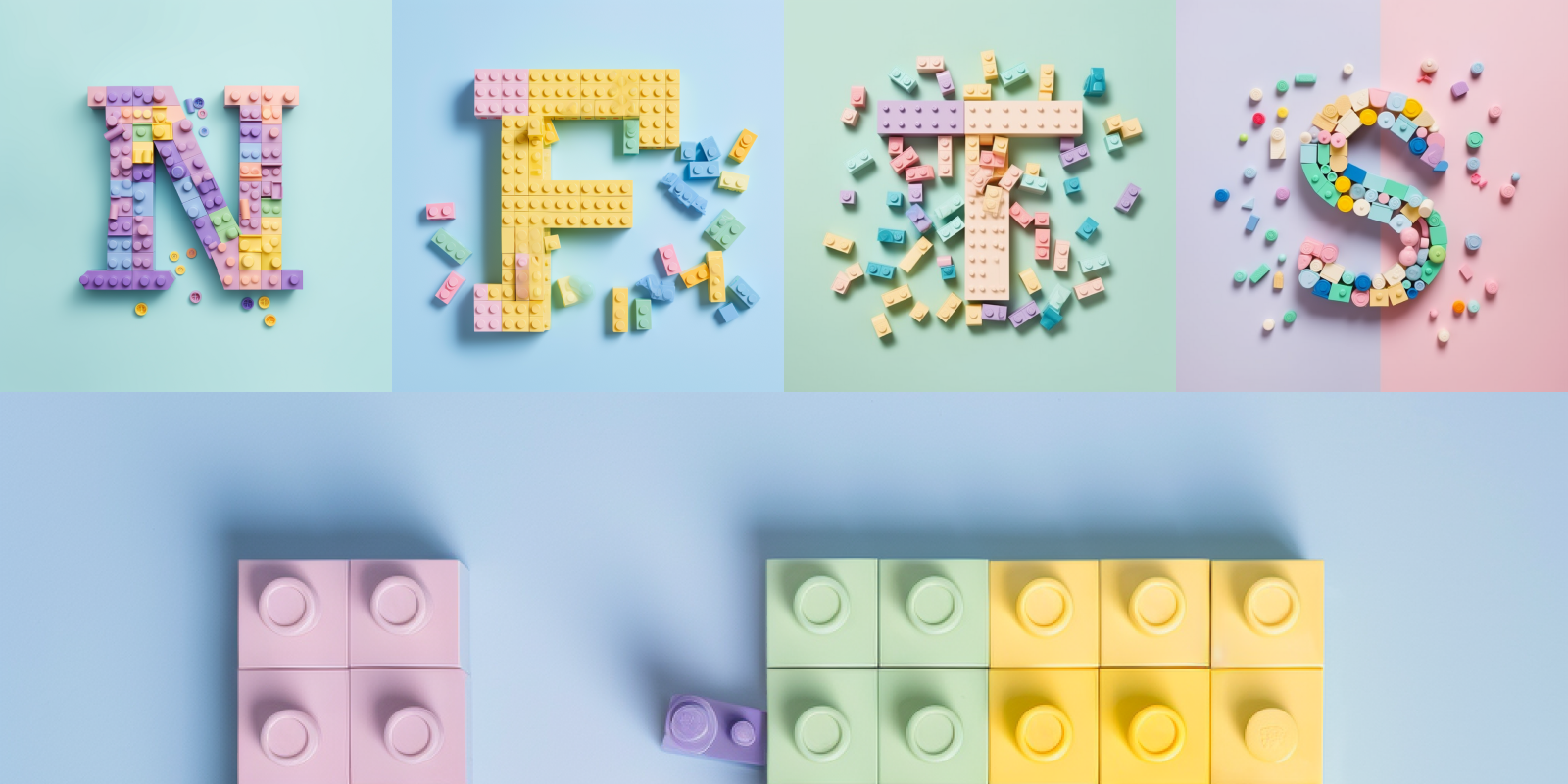I got my first NFT at the end of 2021, which is both late and early in the space.
As a new owner, the next logical step was to join the Discord server of the community. And that was quite the experience.
Despite being familiar with crypto, I quickly discovered that communicating in NFT-land requires you to learn a whole new vocabulary. Parts of it are derived from crypto trading and gaming, while others seem to be native to the NFT culture.
Some terms can be understood through context, others are harder to figure out, especially for non-native English speakers.
So here’s a quick “how do you say…?” list covering some of the basic and most used terms.
(Use CTRL-F to find a specific term and avoid a long scroll. This list is work-in-progress, like a lot of things in NFT-land)
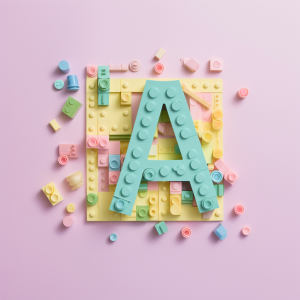
Allowlist
An allowlist (also known as whitelist - see below) is your ticket to a guaranteed mint on a project’s launch date. Allowlists have a limited number of spots available and are usually won by entering raffles, being an early adopter or supporter and/or completing various mechanics required by the project’s creators.
An allowlist spot is always associated with the wallet address you submit.
Being on a allowlist can grant you preferential (smaller) minting prices, but this isn’t an unbroken rule.
Alpha/ alpha call
Early or valuable (potentially profitable) information about an NFT collection or project, usually available in closed circles. This can refer to both existing or upcoming projects. Try to exercise a healthy dose of scrutiny when evaluating alpha information as not all information is shared objectively or accurately.
Alpha callers
People scouting and sharing alpha information. Usually part of the team running a Discord server or some other type of community.
Alpha groups
Communities focused on profitable trading of NFTs, through alpha information, access to trading tools and whitelisting benefits. Most alpha groups are gated, requiring an NFT, referral or some other type of token to join.
Anon
Most people in the crypto and NFT space assume an alternative identity on Twitter or Discord, usually as a security measure but also due to the geekiness and wildness of it all. Due to this fact, each person in the space is considered and called an “anon”. You’ll see this term used quite frequently on Twitter, in messages like “GM anon”.
Ape (noun)
One of the most popular characters in the NFT space, represented through famous collections like BAYC (Bored Ape Yacht Club) or MAYC (Mutant Ape Yacht Club) to name a few.
Ape (into something - verb)
The action of buying multiple NFTs or spending a big amount of cash on NFTs, frequently based on FOMO (fear of missing out) or a strong belief/ alpha info. It’s usually a risky move, with high potential profits and equally high potential losses.
Arbitrage
A tactic of making profits by buying an NFT on a marketplace and attempting to sell it for a higher price on another one.
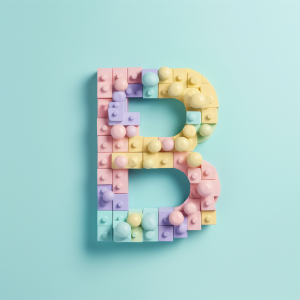
Bear (market)
A general downturn on the market, reflected in lower prices, trading volumes and profits. Depending on the duration or the cause of the downturn, it can cause significant losses and most players in the market will consider hibernating.
Bearish
The feeling (or realization) that something will experience a downfall. You can feel bearish about an NFT collection, an upcoming launch, a community, a person or just the entire market. No limits on being bearish.
Botting
The act of flooding a mint process with automated tools (bots) that execute minting transactions significantly faster than a regular user would. This usually results in buying out most or all of the NFTs available for mint and causing regular users to lose their chance of minting.
Botted
A minting or buying process affected by bots, effectively blocking others from successfully accessing it.
BRB
Acronym for “be right back”.
Brick
The act of significantly or suddenly lowering the starting price of an NFT collection.
Bricked floor (price)
The starting price of an NFT collection that was significantly lowered. Yes, by bricking it.
Buidl
Legendary typo from the early days of crypto, referring to “build”. It became the preferred term for people active in blockchain (crypto, NFTs, decentralized finance apps) - “I buidl on Ethereum”.
Buidler
Person who buidls - fact.
Bull (market)
An upward trend on the market, reflected in growing prices, trading volumes and profits. It’s usually the time of year when NFT projects, funding and expansion skyrocket and flood the market.
Bullish
That tingling feeling that something will experience exciting growth. You can feel bullish about an NFT collection, an upcoming launch, a community, a person or the entire market. Bullish = good vibes only
Burn
The programmatic act of trading one asset for another. The asset you’re trading gets destroyed in the process. This is a process used by various NFT project types, but most frequently for art NFTs using ERC-1155 tokens - collections made up of identical tokens (i.e. 555 NFTs of the same pixelated frog).
Being burned
Any unfortunate instance in which you experience a loss of some kind in the space - bad investment, selling under the buying price, having your assets stolen, your Twitter hacked or a number of other sad stories.
Investing in your security is a good way to keep burns away.
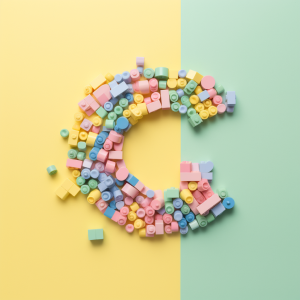
Conviction play
When you’re buying or keeping an NFT despite unfavorable current conditions or for a long-term play, simply because you have (un)explainable faith in the project.
Cook/ cooking
An NFT seeing a growing price is said to be cooking. You’ll see it used like “I got a feelin’ this punk’s gonna cook” or “frogs are cooking”. Not sure why it’s not called “boiling”, but it is what it is.
Copium
When things go bad, you sometimes resort to copium to manage the situation. Copium is putting on a brave face when dealing with a serious disappointment or loss.
If you’re fudded, you get copium. If you get rugged, you get copium. If you’re left holding your bags, you run for copium.
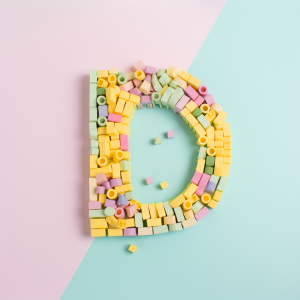
Dank/dankest
An overly used, overdone, tiresome meme, theme or style for an NFT.
Might be wrong tho.
Degen (verb)
Taking the path less traveled when it comes to choosing an NFT to buy. More specifically, buying NFTs created by a less known (or completely unknown) artist or a derivative of a famous NFT, usually hoping it will turn out to do extremely well on marketplaces (aka profits).
Degen (noun)
A promoter or adopter of said “degen” action. Degens usually yolo (see below) into things.
Diamond hands
Buyers who keep their acquired NFTs for a long time. What is defined as a long time in NFTland is up for debate. Diamond hands are the opposite of paper hands (explained below).
Drained
Usually referring to wallets (the crypto kind) which have been hacked and emptied of their valuables. They can be drained by transferring assets to the hacker’s other wallets or by instantly selling them on marketplaces or a combination of both.
Drained assets cannot be regained, due to the nature of the blockchain, which is why you should always keep your seed phrase safe, your valuables in a cold/ hardware wallet and your eyes peeled for fishy characters and links.
Dump
That moment when a big number of NFTs from a collection are simultaneously being listed for sale at low prices.This can happen spontaneously (a lot of owners decide to sell around the same time) or tactically (one or more whale holders decide to liquidate those specific assets from their bags). Or both and that’s a perfect dump storm. Sometimes a dump is followed by a pump (see below), just like rain is followed by rainbows, leprechauns and pots of gold, if you’re into that sort of thing.
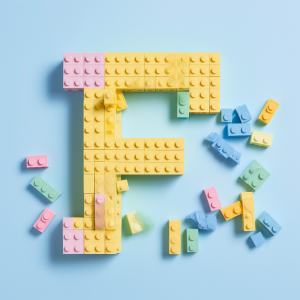
Fade
Basically seeing, evaluating and walking away from an NFT because it didn’t seem like the best idea to get it. Sometimes fading can save you from being burned (see above), sometimes it saves you from said pots of gold.
Fam
Short for “family” because ain’t nobody got time for spelled out words in NFT-land.
“Feel something”
You’ll usually see someone say “I got X just to feel something”. What they mean by it can be a number of things: they were bored, they’re downplaying some alpha they got about X or they’re excusing themselves for the guilty pleasure of buying an underrated/ overrated NFT.
We’re all guilty of “feeling something” every now and then.
Flip
The daring act of buying or minting an NFT with the intention of selling it back immediately for a profit. Depending on the popularity of the collection, this can earn you sizeable profits or just a bit to cover the gas and “feel something”.
Flipper
Not the dolphin. A flipper is a person flipping! NFTs, aka buying or minting something with the clear intention of selling it back quickly for profits. NFT creators generally dislike flippers, but some projects can gain from them.
Floor
Short version of “floor price”, namely the lowest price at which an NFT from a collection is listed for sale. Higher floor = higher prices, low floor = easier to buy in, sadder to sell out.
Flying
When an NFT is flying it’s basically going for the moon, which is crypto talk for a floor price that’s rapidly growing.
FP
Acronym for “floor price”, see above.
FR
Acronym (time is moneh!) of “for real”. You’ll see it in messages like “This collection is wild fr fr” or “Can’t understand what you’re writing most of the time, fr”.
Frens
Short for “friends” because still ain’t nobody got time for spelled out words in NFT-land.
Fud
When you fud, you’re publicly criticizing a project, its founders or its community - or all of it because that’s the kind of person you are - for hidden motives.Fud radars are sensitive in NFT-land and people sometimes confuse objective or even constructive criticism for ill intended comments.
That’s partially caused by the volatility of the space (one fud can put fans in panic mode and reduce the project’s odds for success) and partially because when you work on something for a while you become attached to it and your efforts.
Fudder
A person who fuds. You probably don’t want to be that person. Unless your criticism is objective and based on facts, in which case it might be worth taking on the fud-of-your-fud to raise awareness about potential risks for the community members.
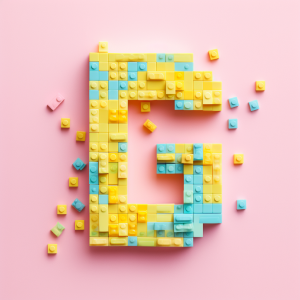
Gas war
An unpleasant event when gas fees on the blockchain are particularly high, due to a high volume of people transacting at the same time. Most notably in NFT-land, gas wars usually happen during popular mints (see below), when everyone wants to get a piece of the action.
Advanced buyers tend to increase their gas fee settings, to get their transaction prioritized and executed faster, which makes life for everyone else a lot more expensive. It’s not unheard of to have gas fees substantially higher than the mint price, which can or can’t pay off, depending on the post-mint success of that collection.
GG
Acronym from the gaming slang, meaning “good game”. It’s used both positively, to recognize or congratulate a success, or ironically, to let out some steam about a flop.
GM/ GN/ GMAEN
This is where it all starts in NFT-land, whether you’re in Discord or on Twitter. It’s how friendship are born, followings built, project whitelists gained, the alpha that’s available to everyone.
GM is “good morning” (not general manager). GN is “good night”. GMAEN is “good morning afternoon evening night”, so you can say hello to all your frens across the world’s timezones.
GMI/ NGMI
The kind of message you wanna hear as possible, as it stands for “gonna make it” and usually expresses strong hopes that a mint or project is gonna moon (see below).
Unless the person saying it is ironic, in which case you’re probably NGMI aka “not gonna make it”.
Grifter
An NFT grifter is a quick-buck maker, often by overpromising, under delivering and generally making profits off of somebody else’s back and trust. Don’t be grifting.
Go ham
When you go ham, you go all in. You put a lot of effort, time or money into something that you seriously believe in. At that moment, you either go ham or you go home.
Gucci
Yeah, not the brand. “Gucci” is just fancy for “good”, like saying “we’re gucci” instead of “we’re good”.
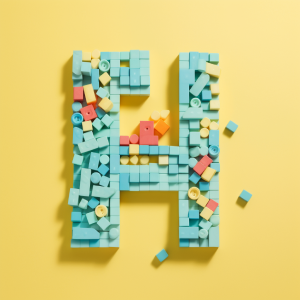
Hodl
Another legend from the early days of crypto, appropriately marked by a typo for “hold”. Hodling is the act of intently keeping a certain asset in your bag for the medium or long term. It’s what you’d now call a “conviction play” (see above).
Hodler
Shockingly, a person who chooses to hodl.
Hopium
When you have hopium, you have a justified/ unjustified hope that everything will work out and be fine one day. You can have or exhibit hopium about a collection, an event or just the whole NFT-land.
Hopium is the opposite of copium (see above).
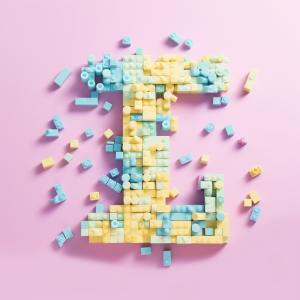
IDK
Acronym for “I don’t know”. YDK what YDK, you know?
IYKYK
Acronym for “If you know you know”. It’s a way of acknowledging that there’s a select group of people with inside info, deeper understanding or just deep conviction about something.
When tweeted as such it tends to create an aura of mystery and FOMO - so better double check that you really should know what they know.
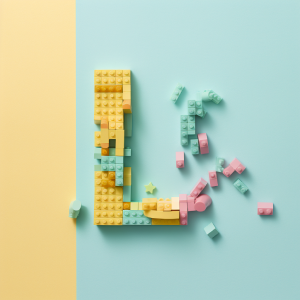
LFG
If you’re a former gamer this will probably sound like “looking for group”. However, in NFT-land it stands for “let’s f***ing go!”. It’s a rallying call, to either celebrate a win or encourage others to keep their chin up and keep going.
It’s a battlefield out there, folks.
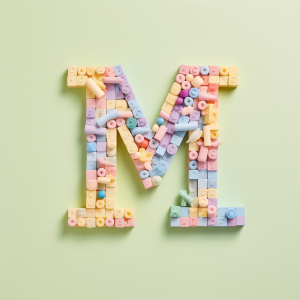
Meta
Ok, so you know Facebook’s Meta. But that’s usually not what people are talking about when mentioning “meta” in NFT-land. Over here it usually means:
-
A strong trend: “The meta these days is OEs” would mean “The hype these days is Open Editions”
-
The core, foundational concept of something: “What is Doodles’ meta?” would translate to “What is the Doodles’ big idea?”
-
Important facts or news from a trader’s perspective: “Do we know what the meta is today?” can mean something along the lines of “Do we know what’s the main event/ collection/ trend today?”
Mfers
Short version of “motherf***ers”. Not much to explain about this one, except it’s most frequently used as a way to address people in the NFT community that go through the same ups & downs as you, like “GM to all mfers showing up on Sunday”.
For the most part it’s not supposed to be an insult if someone calls you a “mfer” in NFT-land, but take that with a grain of salt.
Mint
The process through which you buy a brand new NFT from a collection that’s just launching. You need a wallet, the price amount and a spot on the allowlist to mint an NFT.
Minting is substantially different from buying, as you’re basically getting a fresh-out-of-the-oven NFT straight from its creator(s) - you’re the first external wallet to host that NFT. When you buy the NFT on a marketplace, you’re getting it from somebody who minted it first.There are several stages in a minting process:
-
Premint: usually reserved for the project’s team and VIPs
-
Allowlist (whitelist): open to a limited number of people who did something to qualify for a spot in this early stage
-
Waitlist: open to the 2nd wave of minters, who usually get a spot through raffles
-
Public: when anyone can mint whatever is still left from the collection
Minted out
This is the stuff NFT dreams are made of. When a collection is “minted out” it means all its NFTs have been minted - basically a sell-out. It’s usually a great sign that the public believes in the collection and sees enough value in it to show up and mint.
Minting out is especially challenging during bear (downturn) markets, when active minters are fewer and a lot more cautious with their investments.
Moon
The ultimate goal for crypto, NFTs and every other mfer in Web3. When something moons, it’s on an exciting, strong growth trajectory. It’s that glorious time when every refresh will show a higher price.
You can’t be in Web3 and not hear somebody ask “wen moon?”.

Open edition (OE)
An open edition is an NFT available for mint to anyone, with no or minimal requirements for eligibility (aside from having a wallet and enough funds, of course).Most open editions are more-of-the-same, meaning everybody mints a copy of just one art. For your geek sense, this is usually done through an ERC721 token. Everyone’s copy of the NFT is unique, although the art is identical.Open editions can be free or paid, timed or open forever.
Some open editions use the burn mechanism (see above), so you need to hold 1 or more specific tokens (NFTs) to get the next one.
OS
Usually the abbreviation for OpenSea, aka the most famous NFT marketplace out there.
OOS
Looks a lot like OS, but kinda different. OOS is short for “out-of-stock” and you’ll usually see it when people let you know that an NFT collection is minted out.
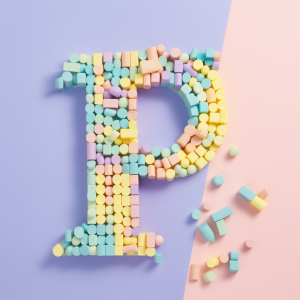
Papered
That sad, infinitely regretful act of selling an NFT before its price peaked. No matter how hard you try, you’re 99% likely to experience this at least once in your NFT life so don’t let it get you down. Unless you’re turning it into a habit, in which case you might want to reassess your beliefs and fears.
Paper hands
The sad, infinitely regretful people who paper NFTs (see above).
There’s a paper hand in all of us.
PFP
Acronym for “Picture for Proof” which refers to every ape, penguin, cat, doodle, undead, zombie, llama, ninja, fairy, creature, pixelated image you see as avatar across Crypto Twitter and Discord.
When you use an NFT image as your avatar, you’re rocking a PFP.
Play
Yeah, this isn’t the verb. A “play” in NFT-land is an event worth watching or joining. When someone says “Deadfellaz is a good play”, that’s one signal to give the collection another look and decided if it’s worth getting involved (i.e. by buying).
Pleb
The pleb is the vast group of people who are left out of a project, community or event. This could be because of entry barriers (price, network connections, prerequisites, etc) or just because they faded an opportunity. It ain’t good to be in the pleb :(
Pull the plug
That moment when you decide to get the flux out of a collection, usually by selling your corresponding NFTs.
Pump
The kind of news you want to wake up to - if you’re a hodler (see above). When an NFT pumps it means its price and volume are growing, making you a happy camper (if you own one) or a member of the pleb (if you don’t have one).
Pump & dump
A pump & dump is a market tactic where one or several holders of a collection artificially increase its price (by buying a large number of NFTs and creating FOMO) and then abruptly sell their NFTs for a profit, essentially driving the price back down. Depending on the size of the collection, you need to be a big hodler (also known as a “whale” - see below) to have this sort of impact on the market.
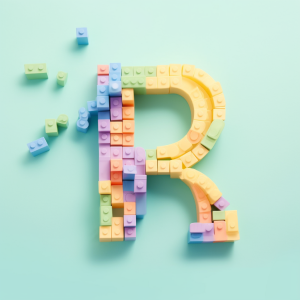
Raid
Sometimes you raid a tweet, sometimes you raid a collection on the marketplace. In both cases you’re basically contributing to the boost or visibility of it, by retweeting content or buying NFTs.
Ride/ ride out
This one has some surfing vibes, as NFT-land is a place of waves and storms. When you’re riding a project it’s like riding a wave - you put your faith and resistance on the line, ignoring events or rumors and hoping for the best.
Riding out is a more fatalistic approach, when you sense a collection’s impending doom but you’re either willing to go down with the ship/board or you’ve realized it too late and there’s no worthwhile way to get out anymore.
Rekt/ get rekt
You can’t be in NFT-land and not get rekt at least once. Getting rekt is drawing the short stick of an investment. Whether you miscalculated, missed a window of opportunity or just faded, getting rekt means you’re taking some sort of loss.
Reply guy/ girl
The people that make Crypto Twitter go round. They’re the people who keep engaging, out of conviction or for a certain goal (like getting allowlist for a future mint), through any sorts of positive comments - from the biblical “GM” to a more thoughtful response. No reply guy/girl, no visibility. Praise the reply!
Rug/ rugged
The tougher form of getting rekt. If getting rekt is kinda passive (you missed out on something or made an unfortunate decision), getting rugged is much more personal. When someone rugs you, they usually cause a financial loss.
The most common example is people launching NFTs, collecting the mint money and disappearing into thin air, along with any hopes of actually seeing your NFT or any of the grand promises from the project’s roadmap.
Rugpull
The event during which someone you’ll probably hate rugs you. Since this is a major foul play and a trust breaker, it seems legit to be described as something that’s snagged from under your feet - hence “rugpull”.
RT
Twitter acronym for “retweet”. Content creators will usually ask for “like, RT and comment” to support the visibility of their posts or threads.
Maybe RT this article, pretty please? 🥹

Sadge
Sadge is what sadness and cringe (or disappointment) would feel like if they had a kid. It’s the kind of feeling you probably wanna avoid in general, but well 🤷
Scammed
This is what happens when a bad actor tricks you into a position where you suffer some type of loss. It can happen through fake websites, infected files, fraudulent transactions and so on.
In NFT-land this term isn’t always used appropriately, as fudders (see above) tend to throw it around whenever they disagree with a project’s decisions.
Secondary
When people say “secondary” in the NFT space, they’re referring to “secondary market” (in 99% of the cases anyway). Secondary markets included websites like OpenSea, Magic Eden, Magically, Blur, Rarible, etc.
You’ll likely see it used in messages like “The projected minted out, get your NFT on secondary” or “X project is trending on secondary”.
Shark
An NFT shark is a trader with predatory moves. They’re usually experienced and well financed traders which act faster or more decisive in key market moments, using key information (alpha) and/or tools which give them an edge (like mint or bidding bots, trait snipers, etc).
Shill/ shilly
To shill is to blatantly promote, unrequested, a project, app or a community (or anything really) with the hopes of drawing buyers & users to it. Think of shilling as the equivalent of annoying popups, overpromising and generally way underdelivering on their marketing promise.
Being shilly is sharing obviously biased, unrequested and unrealistic information with your audience. Web3 influencers and marketing experts tend to be shilly by design.
SMH
Acronym for “shaking my head” - true story. It’s used to express disbelief at how unpleasant, disappointing or plain stupid something is, to the point where there are no words to describe it.
I secretly suspect it might also mean “so much hate”, but can’t confirm it.
Snipe
When you snipe an NFT you’re buying a valuable NFT that’s unexpectedly accessible. It can be a generally expensive NFT suddenly sitting at floor price, a super rare trait that hasn’t been traded in a while, a recently minted NFT that’s being sold under your expected price and other cases of trading luck.
To successfully snipe you need: a) to know what you’re looking for and b) have the right tools or timing to get it before other sharks (see above) move in.
Sweep
Sweeping is the act of buying NFTs in bulk. In most cases this means buying a bunch of NFTs sitting at floor price, which is called “sweeping the floor”. It can also mean buying 2, 3, 4 or more NFTs of a certain rarity or sharing a specific trait.
Sweeps generally have the effect of bringing a collection’s value up, as they buy the lowest priced items. However, this isn’t always a sustainable or even effective tactic of pumping the price.
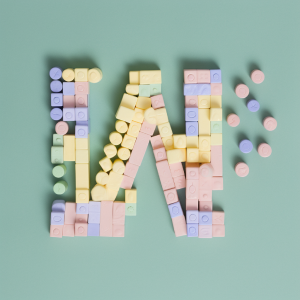
Wen
Famous typo for “when”. It became famous due to “wen moon”, one of the foundational laws of crypto and NFTs. “Wen moon” is asking and expressing hope about a project or token experiencing a boost in value.
Whale
An NFT whale is a heavy trader with amassing power. They’re the holders of the biggest bags in the space, both financially and portfolio related. A whale exhibits high levels of funds and shocking amounts of NFTs, usually owning substantial percentages of a given collection.
When a whale moves in the market everybody can see and feel the waves.
Waitlist
Waitlists are the second tier of mint spots, similar to whitelists (see below). Unlike whitelists, being on the waitlist doesn’t guarantee your spot to mint. Waitlists generally have access to whatever amount of NFTs is left unminted after the whitelist folks do their thing.
Waitlists are also by default “first come, first serve”, although different projects may choose to use different rules.
Whitelist
Whitelists are tools used by most projects to build their audience of buyers for an upcoming mint or event. To get a whitelist spot you generally have to join a raffle, interact with the founders or community in specific ways or follow various types of qualifying mechanics presented by the project.
A whitelist spot usually means a guaranteed spot to mint, although this is sometimes diluted by overallocation - in which case the rule is “first come, first serve”. This causes gas wars (see above).
WTF
If you’re underaged, this is the acronym for “what the fox”.
If you’re old enough, this is the acronym for “what the f**k”.
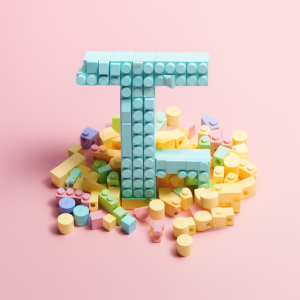
TBF
Acronym for “to be fair”. Because it’s worth saving the time to type it out, tbf.
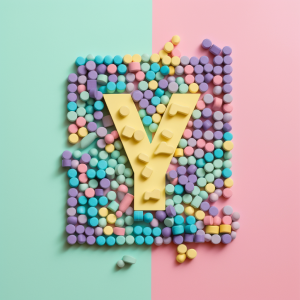
YOLO
Acronym for “you only live once”. In the context of NFTs, it’s sometimes used as the reasoning behind making risky decisions, like minting a potentially failing project, buying a seemingly inactive NFT or deciding to ape (see above) with more funds than would be safe.
Basically when you yolo, you also say a quick prayer.
Liked this piece? Maybe collect it or share it with your frens 💚
Wanna add a missing term? Let me know @anansi_xyz and I’ll pop it in the list 🙏
